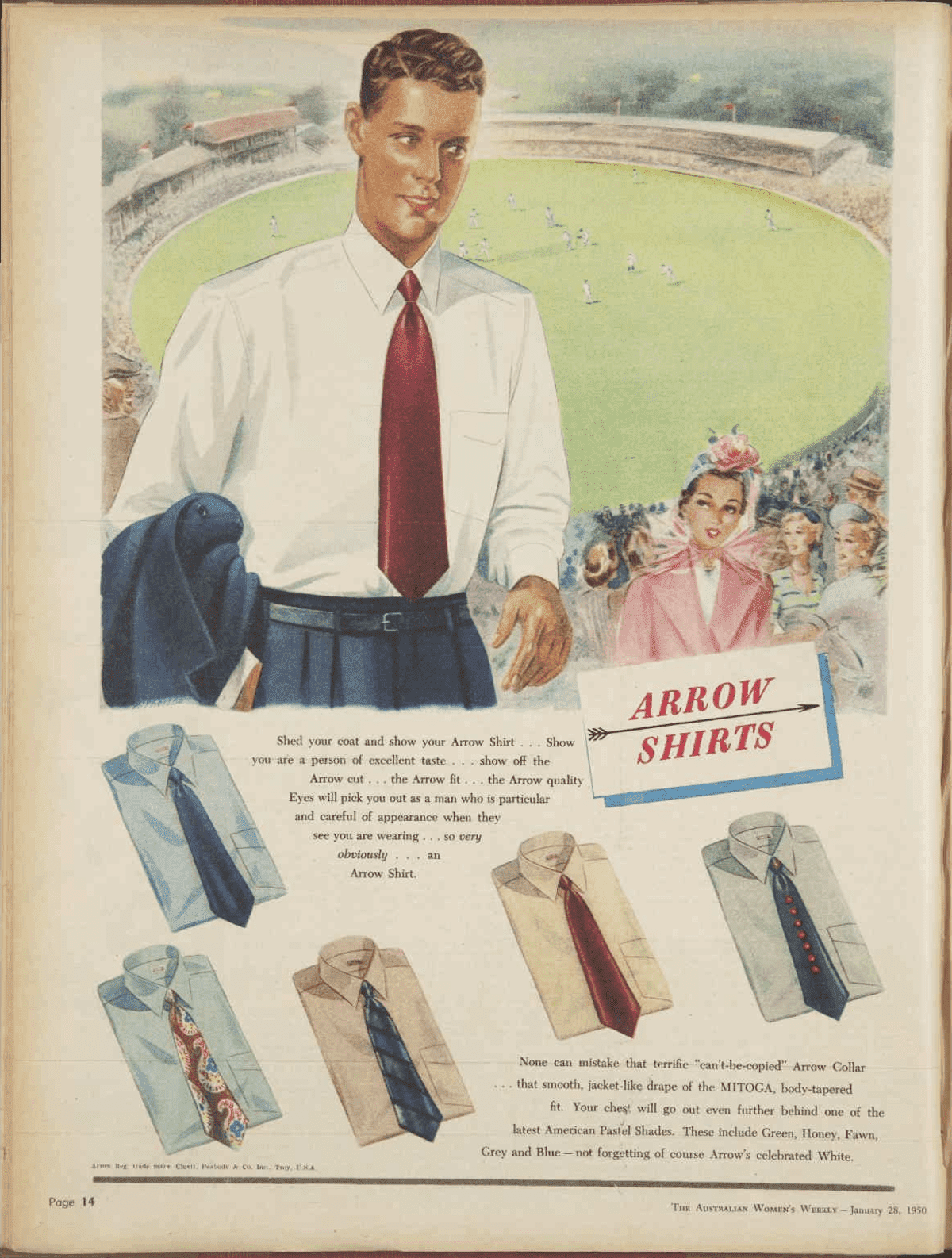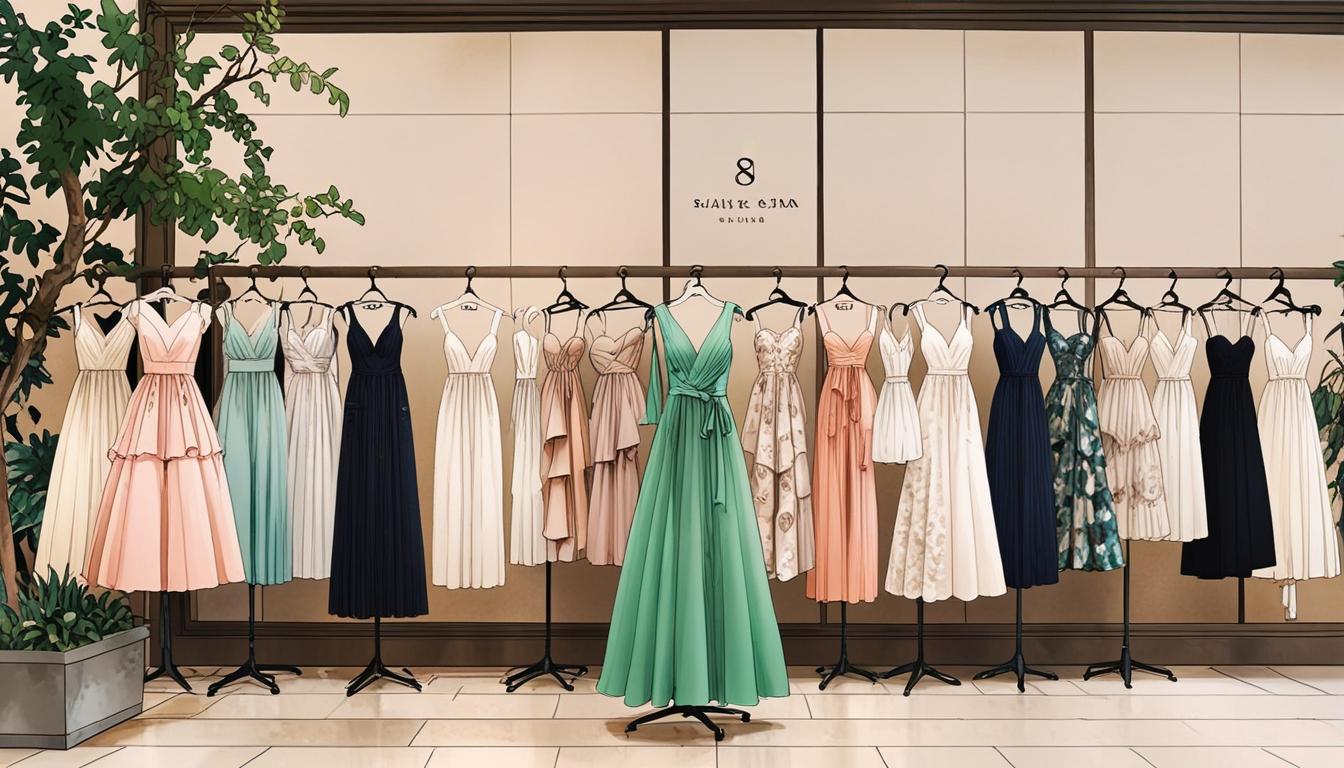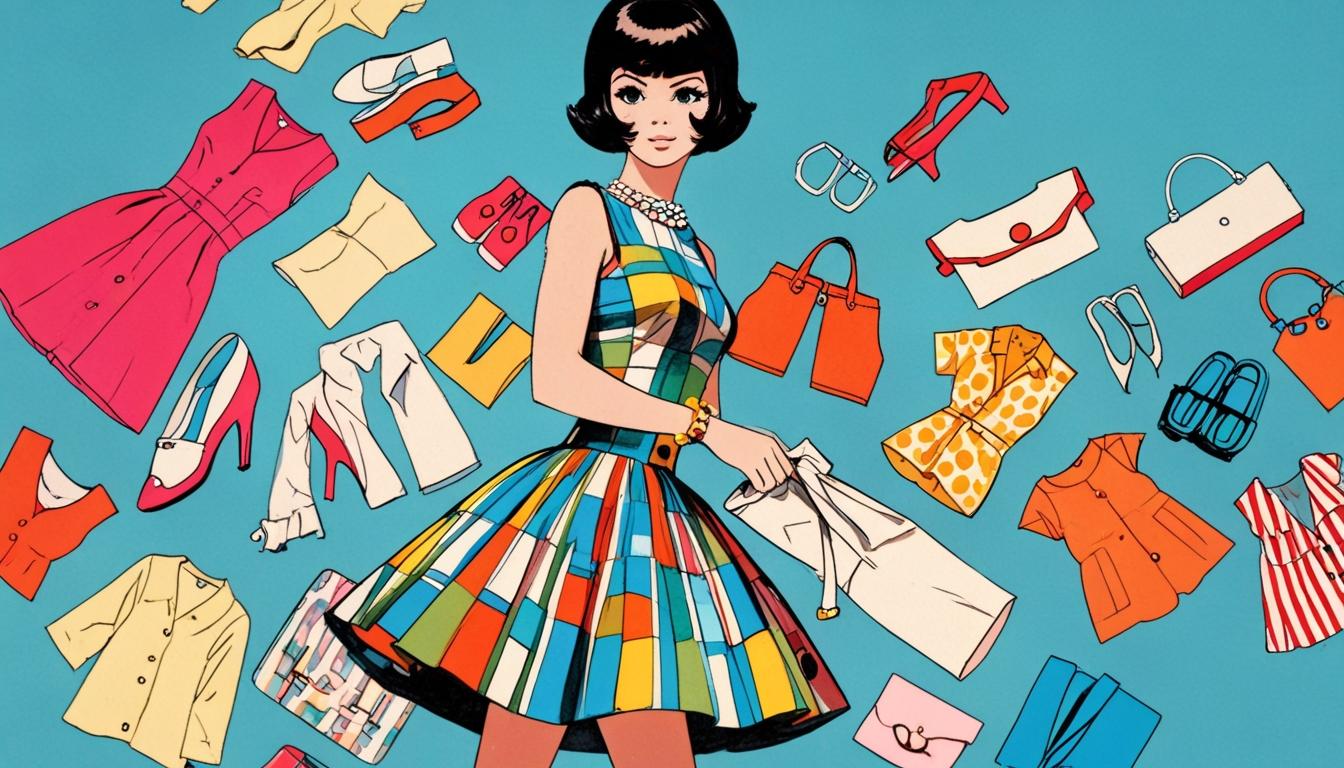Since its establishment in 1851 by Cluett, Peabody & Co., Inc., Arrow has become a cornerstone in the American men’s dress shirt business, known for its fashionable yet functional apparel. The brand’s extraordinary recognition and continued popularity highlight its enduring appeal and commitment to quality. Arrow’s journey from a modest shirt collar manufacturer to a global fashion icon reflects its ability to evolve with the times while maintaining its core values.
The origins of Arrow trace back to an innovative idea in 1820 when Hannah Montague created the first detachable shirt collar in Troy, New York. This innovation revolutionized men’s fashion, leading to the founding of Cluett, Peabody & Co., Inc. in 1851. By 1885, Arrow had emerged as a pioneer in men’s fashion, adapting to the changing tastes and trends of American culture. From the classic white shirts of the 1950s to the vibrant patterns of the 1960s and 70s, Arrow’s designs have mirrored the dynamic shifts in fashion, always offering products that meet the evolving needs of its customers.
Arrow’s ability to cater to contemporary fashion demands while staying true to its heritage has been key to its success. This adaptability was evident after World War I when the brand transitioned from detachable collars to the soft attached collars favored by soldiers. As fashion trends evolved, Arrow continued to innovate, appealing to the young, urban professionals of the 1970s and 80s with redesigned products. The acquisition of worldwide rights to the Arrow brand in 2004 further cemented its status as a global leader in men’s fashion.
Today, Arrow’s influence extends far beyond the United States. Licensed in 109 countries and featured in a broad assortment of men’s, women’s, and children’s apparel, Arrow embodies the youthfulness and optimism of the American spirit. Recent partnerships, such as the agreement with Seidensticker Private Label GmBH to distribute Arrow products in Europe, showcase the brand’s commitment to reaching new markets and continuing its legacy of quality and innovation. From its humble beginnings to its current status as a symbol of American style, Arrow remains dedicated to providing superior quality apparel that honors its rich heritage and appeals to modern consumers.
80s Arrow Shirts Commercial
How to tell if Arrow is vintage from the logo
Arrow is a brand with a rich history dating back to 1851. Known for its classic dress shirts, Arrow has evolved its branding over the decades to stay relevant in the fashion industry. The logo of Arrow is a key indicator of the era a particular piece comes from. By examining the logo, you can determine whether your Arrow garment is vintage and from which period it originated. Below, we break down the Arrow logos used over different periods to help you identify the vintage pieces in your collection.
1920s to 1990s Arrow logo
- The early Arrow logo features a stylized arrow graphic integrated with the brand name.
- The arrow symbol is simple yet distinctive, pointing right.
- The text is bold and sans-serif, giving it a strong and timeless look.
- This logo was used for a significant portion of the 20th century, making it a common identifier for vintage Arrow garments.

1920s to 1990s Arrow logo
1990s to now Arrow logo
- The modern Arrow logo introduces a more minimalist and sleek design.
- The text is in a contemporary sans-serif font, maintaining a clean and professional appearance.
- The arrow symbol is retained but streamlined to match the modern aesthetic.
- This logo is often accompanied by the text “USA • 1851” below, highlighting the brand’s heritage and origin.
- Garments with this logo are likely from the late 1990s to the present day, reflecting Arrow’s evolution into a modern brand.
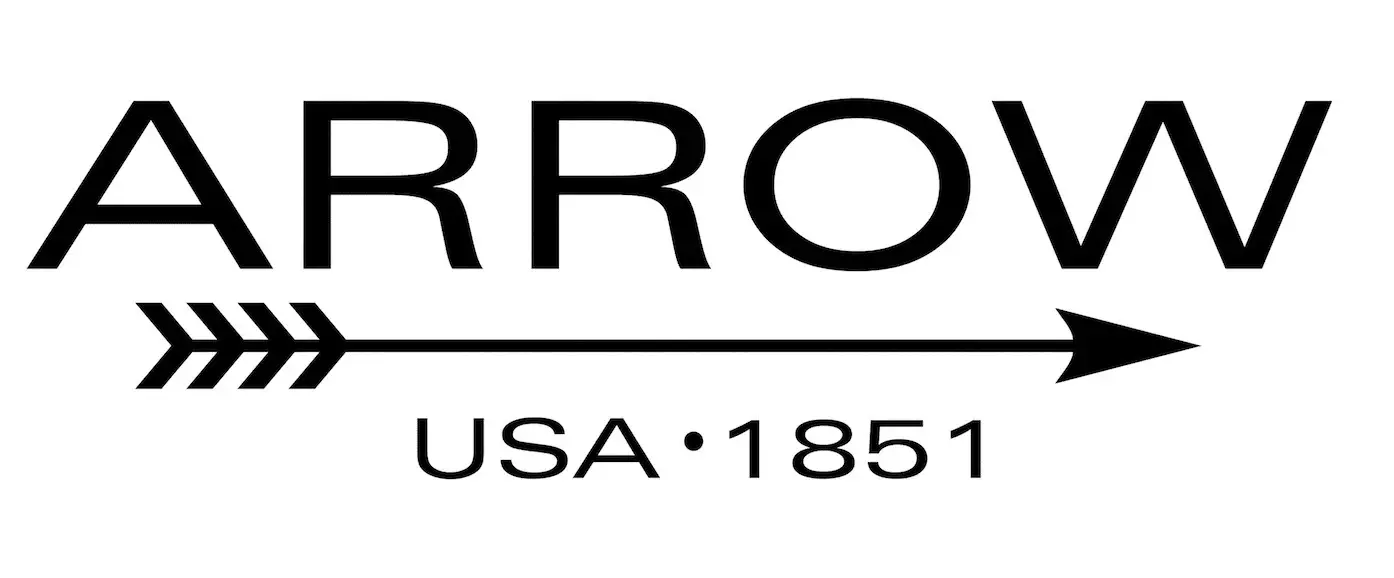
1990s to now Arrow logo
How to tell if Arrow is vintage from the tags
Arrow has been a well-known brand in the clothing industry for decades, with its history dating back to 1851. As a result, the tags on Arrow garments have evolved significantly over the years, reflecting changes in branding, materials, and manufacturing locations. Identifying vintage Arrow clothing can be challenging, but understanding the nuances of their tags from different eras can help. This guide will walk you through the identifying features of Arrow tags from the 1950s to the 2010s. Each decade brought distinct characteristics in tag design, materials, and logos, providing clues about the garment’s age and authenticity.
Can’t identify those vintage tags or labels? Upload a picture on our vintage tag identification page, and we’ll help you out!
1950s vintage Arrow tags
- Tags often featured simple designs with bold lettering.
- Commonly used phrases like “Perma-Iron” or “Sanforized.”
- Tags were usually rectangular with a clean and straightforward layout.
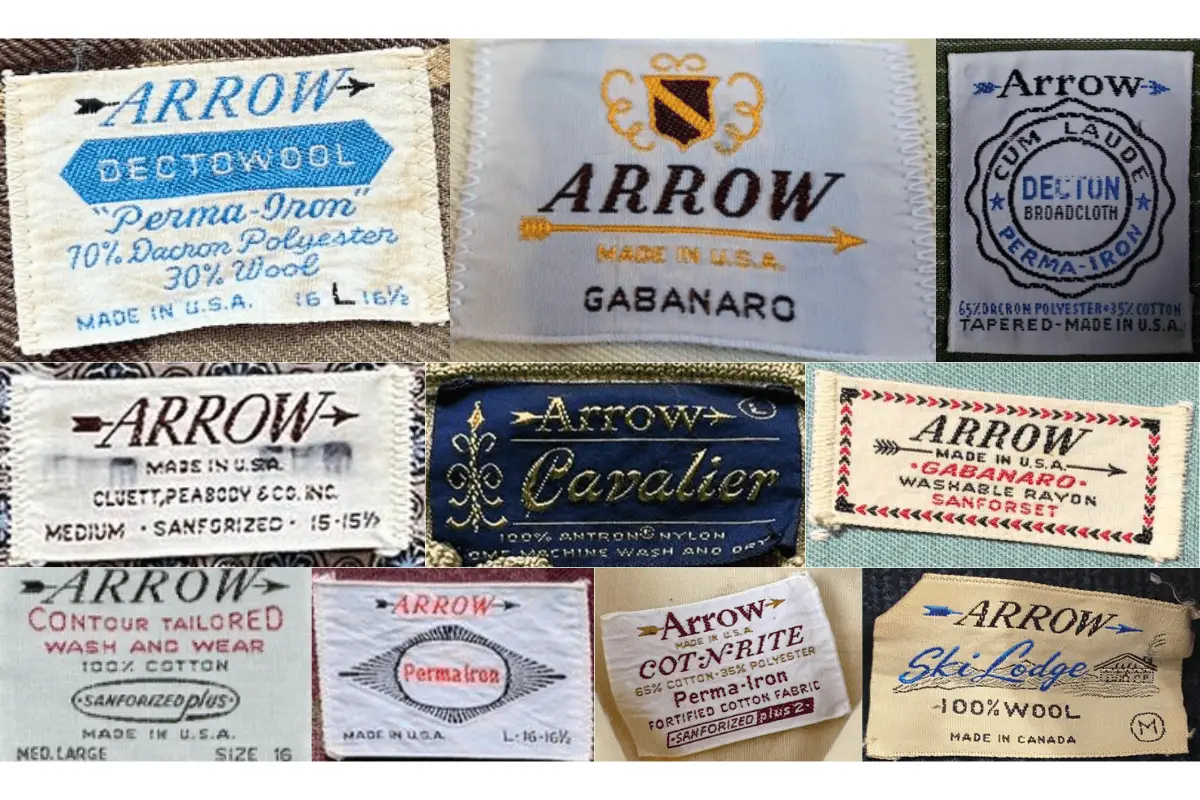
1950s Arrow tags
1960s vintage Arrow tags
- Introduction of more elaborate designs and use of logos like the arrow symbol.
- Tags often had decorative borders and additional branding elements.
- Materials began to diversify, with more use of synthetic blends mentioned on the tags.
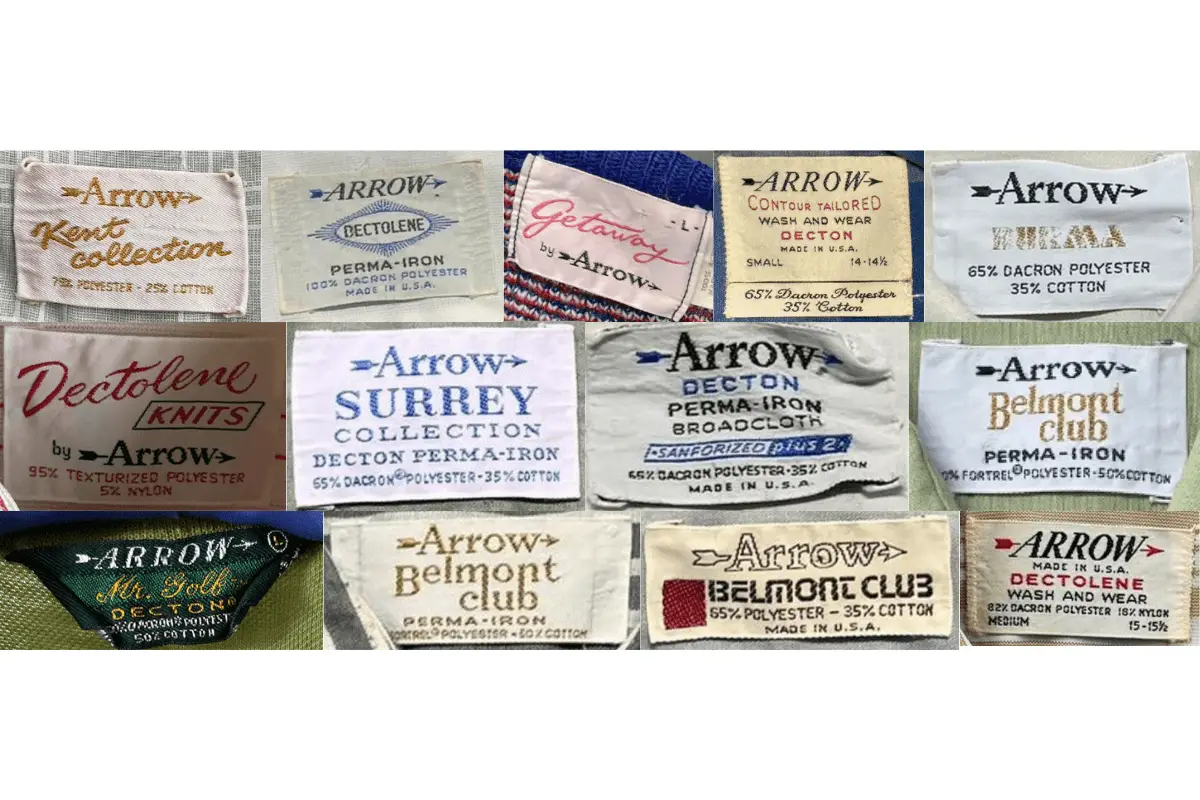
1960s Arrow tags
1970s vintage Arrow tags
- Tags featured a mix of serif and sans-serif fonts.
- Bold designs with bright colors and larger tag sizes were common.
- Often included detailed product information, such as fabric content and care instructions.
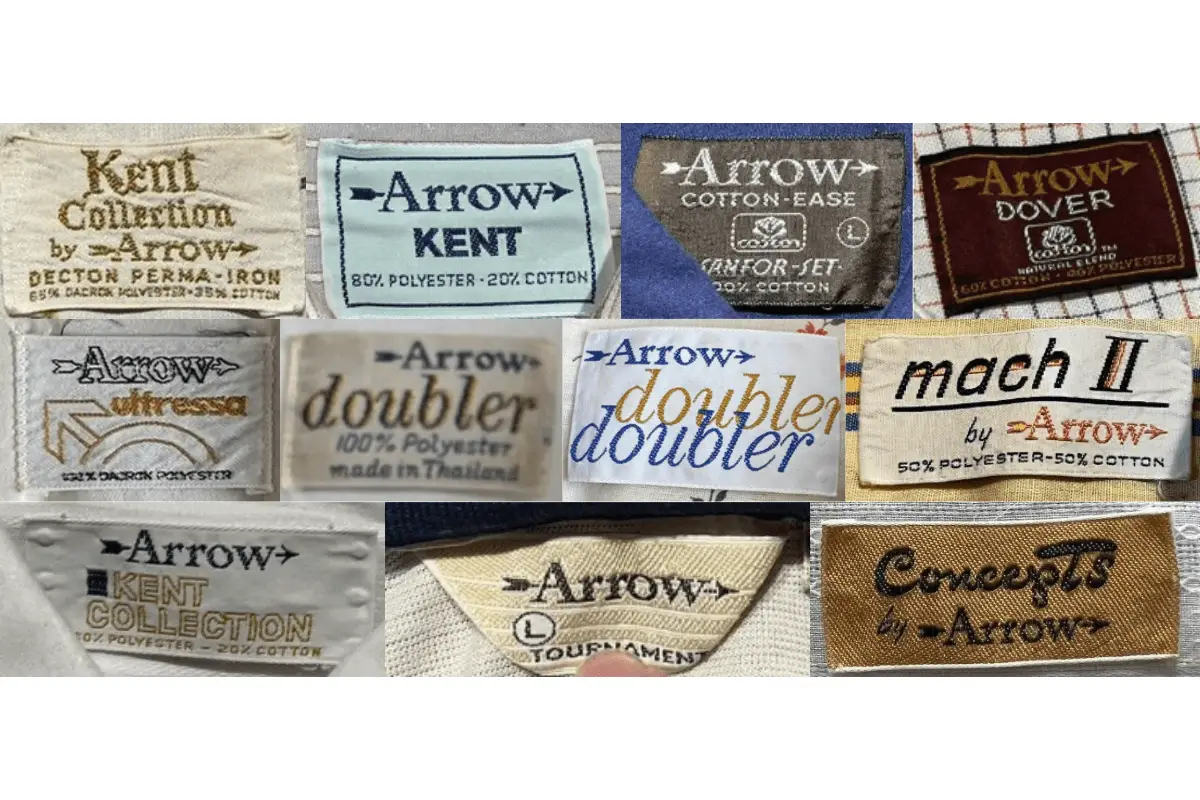
1970s Arrow tags
1980s vintage Arrow tags
- Use of distinctive logos and branding, often with an arrow motif.
- Rectangular tags with bold, modern fonts became popular.
- Additional text like “Made in U.S.A.” or “Kent Collection” indicated origin and specific lines.
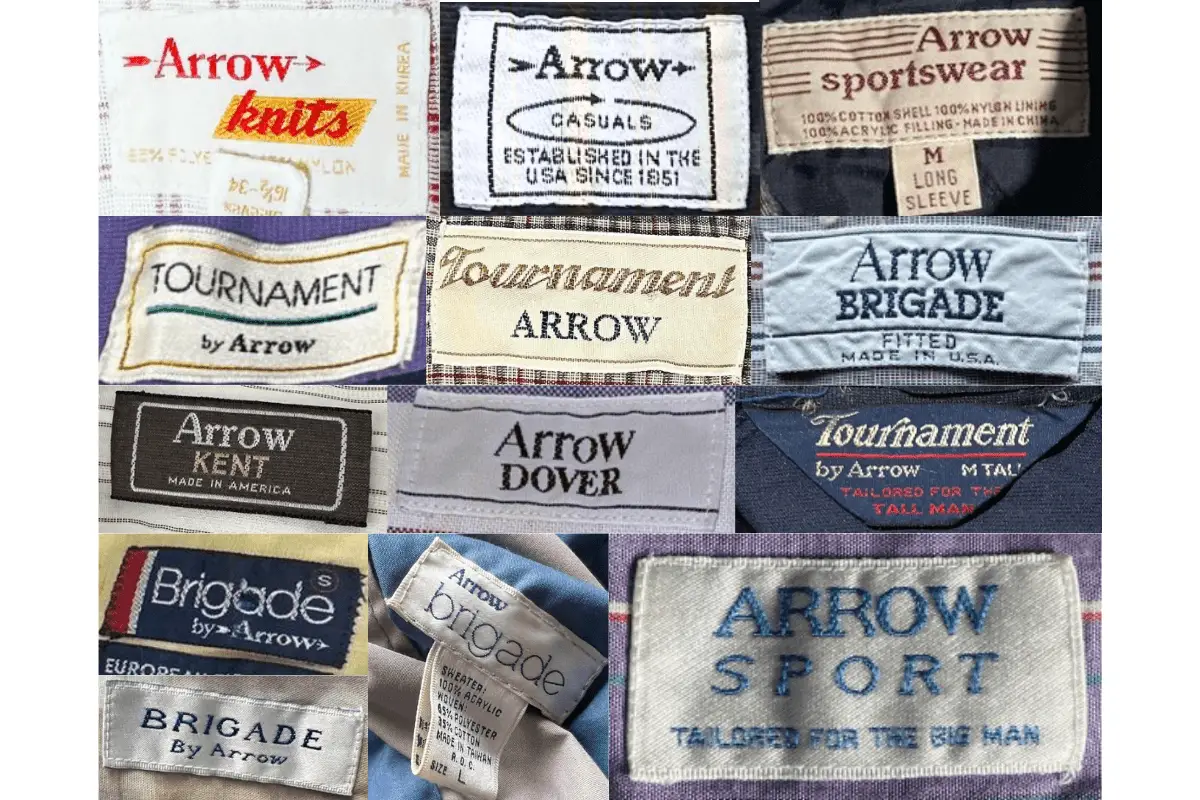
1980s Arrow tags
1990s vintage Arrow tags
- Shift towards more minimalist and sleek tag designs.
- Introduction of new materials and blends, often highlighted on the tags.
- Incorporation of modern logos and less text-heavy designs.
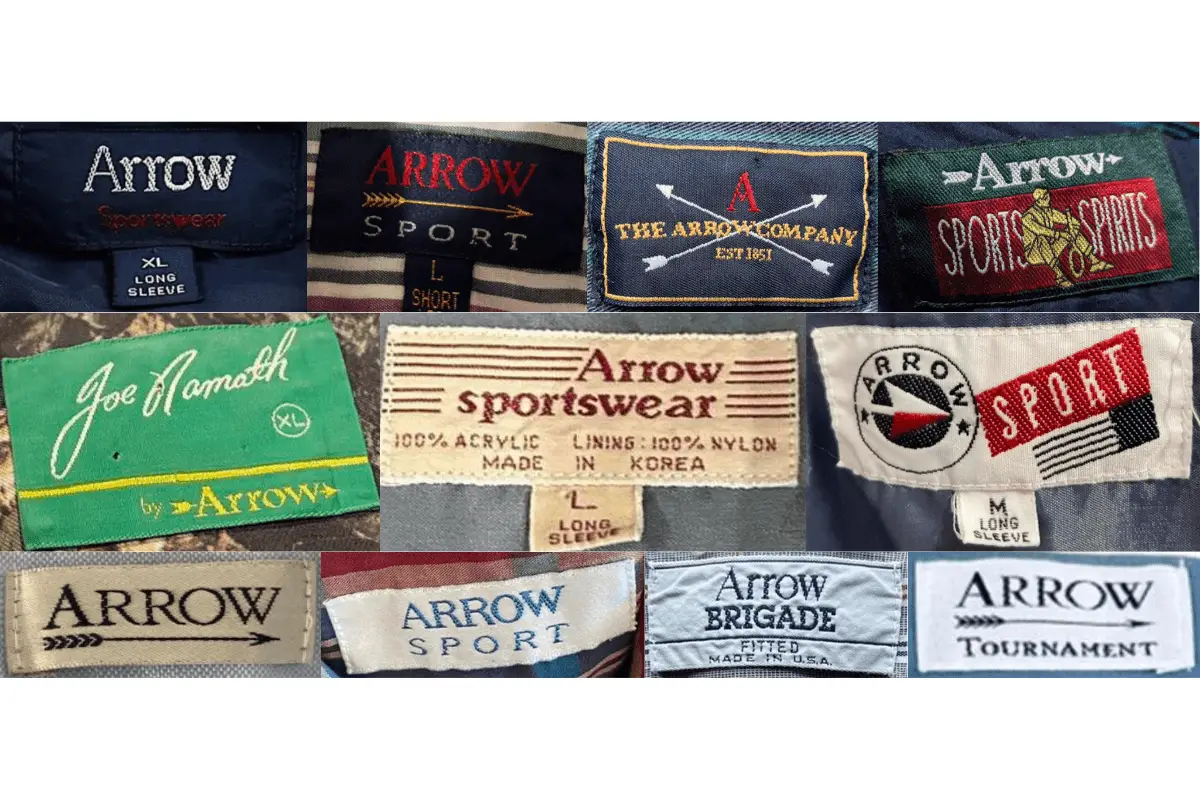
1990s Arrow tags
2000s vintage Arrow tags
- Modern aesthetic with a focus on branding and logo prominence.
- Tags often included detailed size and fabric information.
- Variety of colors and tag shapes, reflecting contemporary trends.
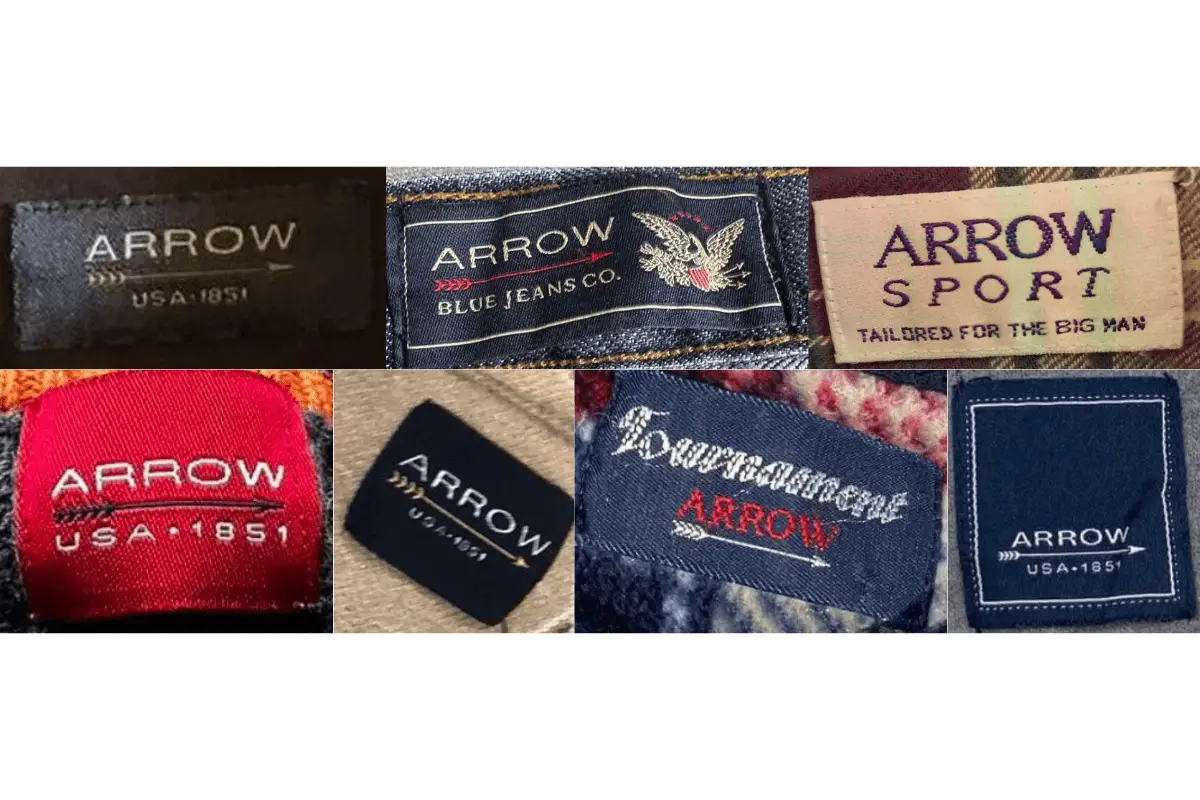
2000s Arrow tags
2010s vintage Arrow tags
- Continued use of modern, sleek designs with updated logos.
- Emphasis on minimalism with clear, concise information.
- Tags often used high-quality materials and printing techniques.
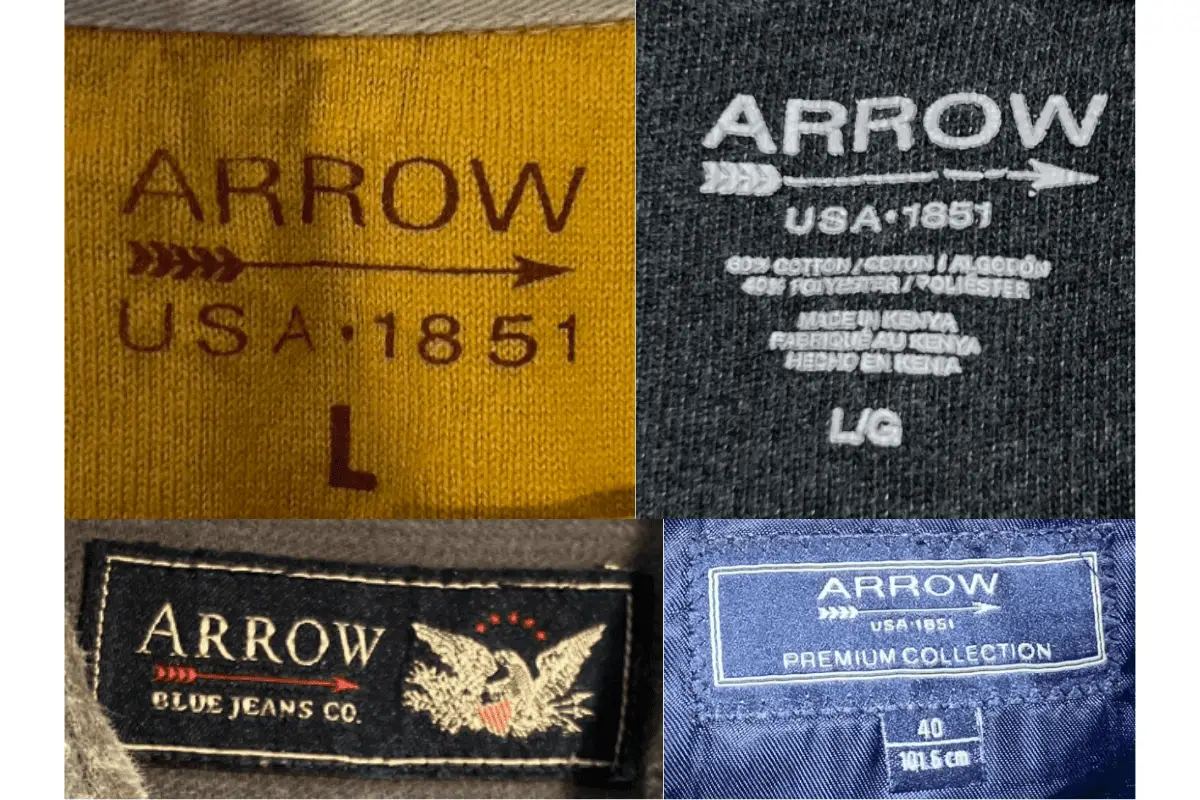
2010s Arrow tags
